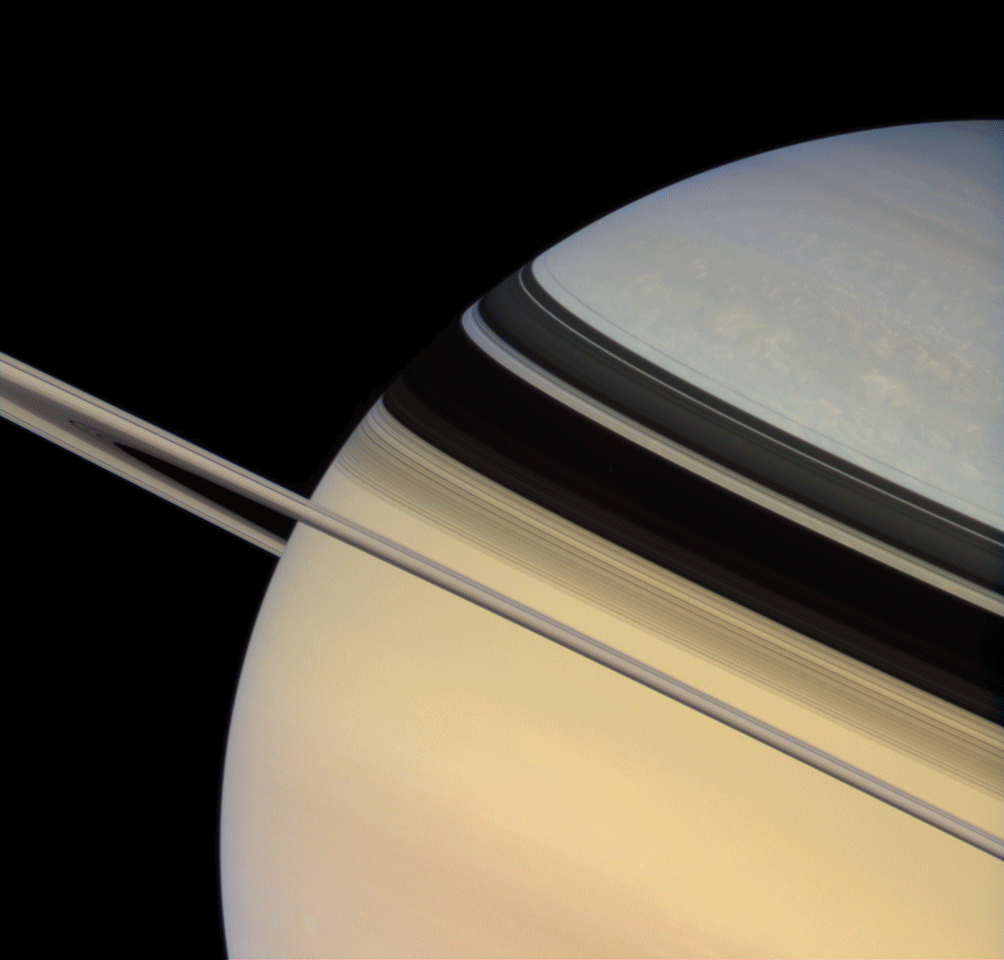Bruce Murray Space Image Library
Cassini crosses Saturn's ring plane, 4 February 2007

The most opaque ring, the B ring, which casts the broadest, blackest shadow across the northern face of Saturn, changes most in brightness from lit to unlit side, while the much more transparent C ring, located closer to Saturn than the B ring (and which casts the thin groove-like shadows across Saturn's near-equatorial regions) changes very little in appearance as Saturn crosses the plane. This 11-frame animation was created from frames taken by Cassini's wide-angle camera through red, green, and blue filters; the frames are 20 minutes apart, so the whole animation spans two hours and 40 minutes. During that time, Saturn rotates nearly a quarter turn, which can be seen in the motions of clouds in the northern latitudes. At the very end of the animation, a bright dot -- the moon Enceladus -- appears on the far side of Saturn's rings. In the full-resolution version of the animation (GIF format, 3.2 MB), Epimetheus is also visible, running ahead of, and faster than, Enceladus.


 Explore Worlds
Explore Worlds Find Life
Find Life Defend Earth
Defend Earth

